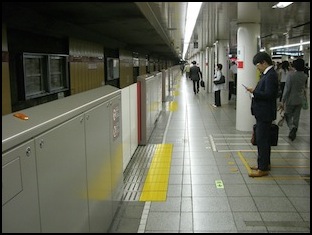I'm not sure our subway platforms (Park & DTX excepted) are really dangerously crowded enough to merit the expense. This works in Asia where sardine-can is the norm, and NYC is right to experiment with it...but, really, do we have that big a safety hazard here over the norm? Especially when considering that old stations are much harder to retrofit with this than new (like the 2nd Ave. Subway stations that are getting them from Day 1).
I think the safety angle is sufficiently enhanced by the security cam era, which inevitably can lead to some sort of trip sensor that auto-stops an approaching train if somebody falls completely into the track area. That's cheap to implement on top of all the usual security cam frills on the platform. And the garbage situation is much better than it was years ago. Litter laws are enforced more in the subway, the bins are more plentiful, they're emptied more frequently, and the bins are physically more robust and better-designed to contain garbage. That's Homeland Security money doing its job. I know the T's maint staff sometimes does a crappy job picking up trash on Red and Orange downtown where there's a little bit of wind tunnel effect between Park-DTX, DTX-State...that's on them. But compared to when the Metro first debuted there's a lot fewer people bringing papers onto the trains. This little thing called the iPhone has put quite the dent in the dead trees newsprint biz.
As for dwell times and crowded platforms...well, not to sound like a broken record: CBTC signaling! Get those headways down to 3 minutes at rush and you'll never have an overcrowded Red platform at Park. The T is simply not a sardine-can subway in the absence of catastrophic delays (and...want fewer catastrophic delays, how 'bout tackling that repair backlog?). We simply don't have the volumes of people as Midtown Manhattan or Tokyo...the platform comfort upside isn't nearly the same when it's relatively rare to be standing toe-to-toe.
FWIW...the revised RL door configuration is going to be universal sooner or later. The new cars, if ever ordered, will match the 01800's setup. And since they'll be a small, isolated minority of the fleet after the 01500/01600's are retired, it's pretty unlikely the ongoing-rehabbed 01700 cars are going to last >12 more years. Parts supply alone will dictate that they'll have less running time post-rebuild than their more numerous predecessors did. The nonstandard mix of door configs is not going to be nonstandard forever.


